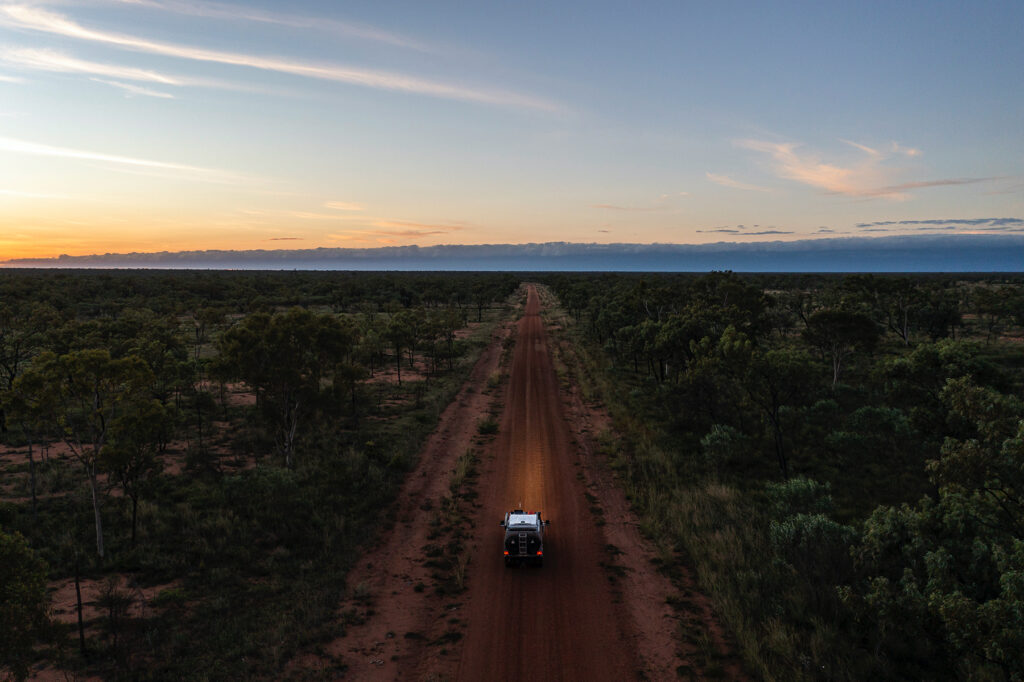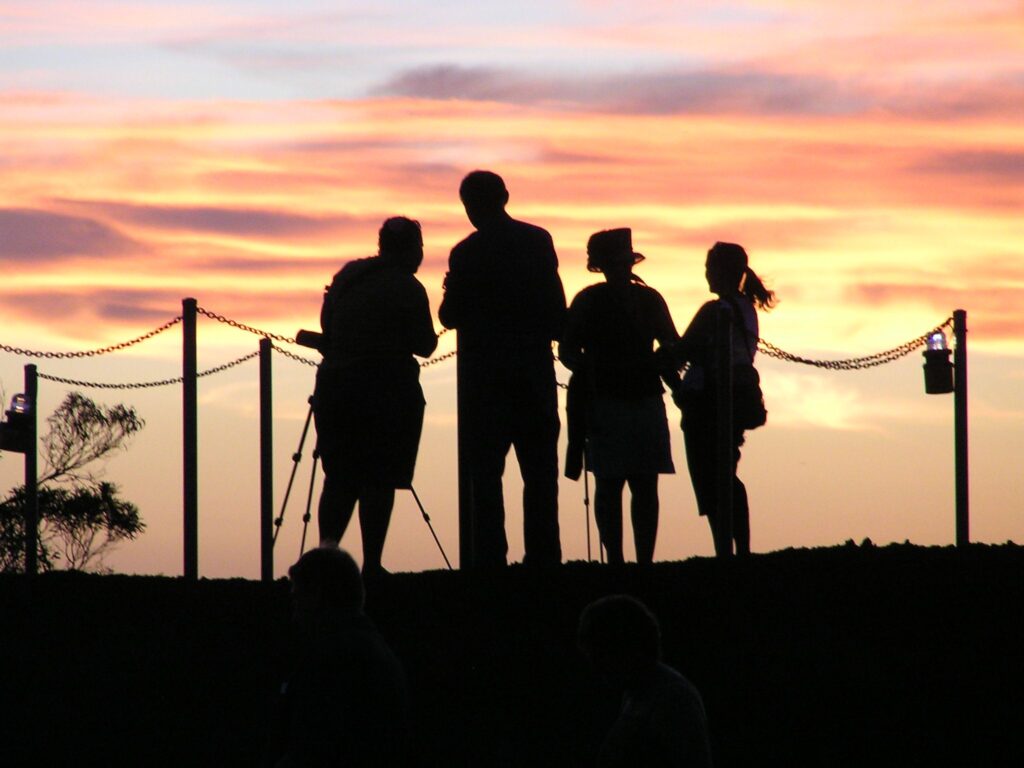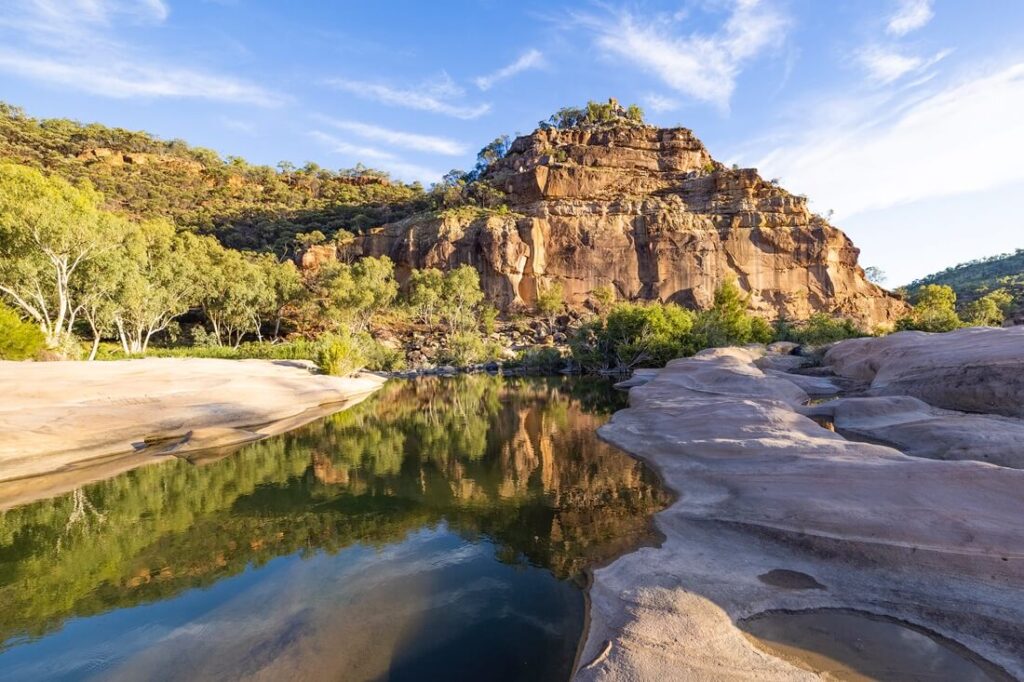Breathtaking, endless horizons and big open skies, scenery to die for.
The Flinders region is ideal for people seeking a little excitement in their lives, particularly those looking for a taste of the Queensland outback. In this blog article, we’ll look at just a few of the gorgeous National Parks and regions you should visit to experience our endless horizons.

The Basalt By-Way
With awe-inspiring scenery and endless horizons everywhere you look, The Basalt Byway is a 95-kilometre four-wheel-driving trail that is a must-see for any outdoor or off-road enthusiast – And more importantly, one of the perfect ways to experience Hughenden’s open skies and endless horizons. The Basalt By-Way runs through a number of properties that were previously primarily sheep stations but have since been converted to cattle farms. All throughout the Basalt, the landscape tells the stories of pioneering people who lost everything in catastrophic floods that swept through these valley locations many years ago.
There is a wealth of flora and native wildlife to see, and spotting Kangaroos, Dingos, or Emus is always a highlight of a trip on the Basalt. The birdlife is abundant, and in the wetter months of the year, the wildflowers and blooming Gums are stunning. In the drier months of the year, the Flinders Poppy, for which Hughenden is famous, blooms, producing rivers of scarlet amid the wide-open plains.
Travelling on this track would undoubtedly pique the interest of 4WD enthusiasts. During the wetter months, this route crosses the Flinders River, offering plenty of great water holes for casting a line or even dipping your legs in the water to cool down. We urge that you drive according to the road conditions because this is an unsealed route. Do not veer off the main path on the byway as many sections cross through private property. Remember, if you open a gate, please close it behind you!

Mt Walker
Mount Walker, 10km south of Hughenden, is 478 metres above sea level and offers six spectacular lookouts with 360-degree views of the region— make sure you allow enough time for the journey up the mountain so you can fully enjoy the sunset.
The vast plains southwest of Hughenden, where the Hughenden – Winton road runs, can be seen from both Etna and Ironbark lookouts. The Ironbark lookout was named after a grove of Ironbark trees that sprang up in front of the observation mound. At night, the lights of Hughenden township can be viewed from the Hughenden Overlook, creating a beautiful display across the horizon.
Sunset is best experienced at the appropriately named Sunset Overlook (check the Flinders Discovery Centre for sunset times) and is a fantastic photo opportunity. The night sky turns a purple-pink haze in the winter, and is a blaze of red/orange over the motionless horizon in the summer.

Moorrinya National Park
The magnificent Moorrinya National Park offers an authentic experience of the remote Outback. The National Park, which is located in the heart of the Desert Uplands protects 18 vegetation groups in the Lake Eyre Basin, one of Australia’s most significant catchments. It covers 32,607 hectares.
This spectular and isolated National Park is made up of dry, flat plains crisscrossed by watercourses. Woodlands of eucalypt, paperbark, and acacia sit serenely beside open grasslands. Moorrinya is an Australian wildlife refuge and is a sanctuary for kangaroos, koalas, emus, and dingoes, as well as endangered species including the square-tailed kite, squatter pigeon (southern subspecies), and Julia Creek Dunnart. For many animal enthusiasts visiting our region, Moorinya’s unique collection of native wildlife makes it a must-see.

Porcupine Gorge
We couldn’t make a list on Hugenden’s endless horizons and stunning landscapes without adding one of our region’s most impressive features: the stunning Porcupine Gorge.
Porcupine Gorge National Park is a 25-kilometre stretch of open woods and grassland that runs besides Porcupine Creek. The creek has carved a spectacular canyon, revealing hundreds of millions of years of sedimentary rock layers. The eroding activity of the creek has also created the Pyramid, an isolated monolith of multi-coloured sandstone rising from the canyon floor and fashioned as its name suggests.
The Porcupine Gorge National Park and the surrounding area have a rich cultural significance, with three traditional Aboriginal groups (the Gutjal, Jirandali, and Mitjumba) maintaining ancient connections to the country inside the park.
Porcupine Gorge provides possibilities to see a variety of vegetation and wildlife among the colourful volcanic basalt scenery and sandstone boulders. The gorge also provides chances for bushwalking, bird watching, and swimming in the gorge’s crystal clear waters.
Not the end of the Horizon
Hughenden’s boundless horizons and breathtaking natural landscapes don’t stop there; there is an abundance of hidden gems, gorgeous landscapes, and possibly even a few dinosaur fossils waiting for you to discover. Check out our website’s See & Do and Itinerary sections for more information on what you can do in our beautiful part of the world.
Back to all News